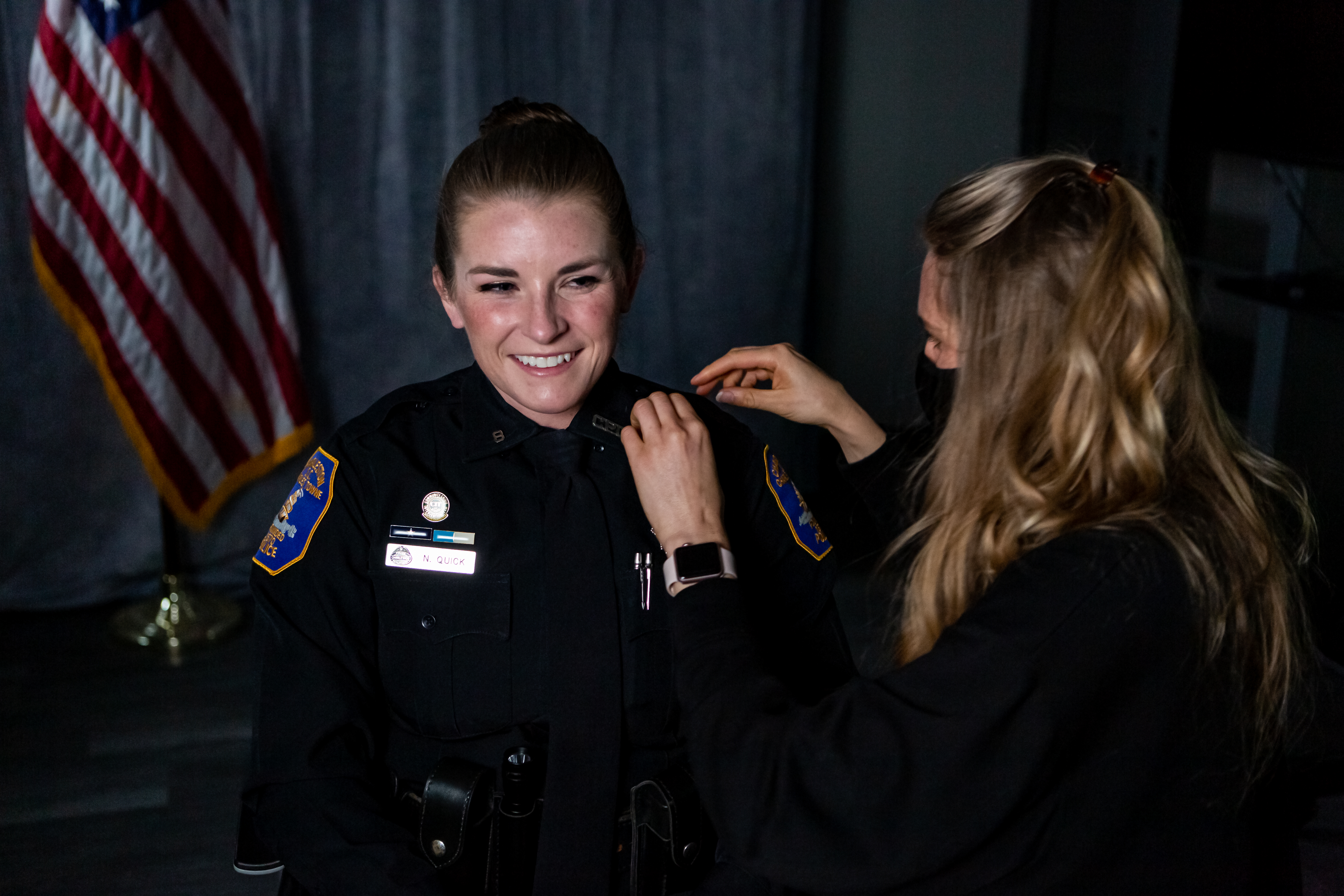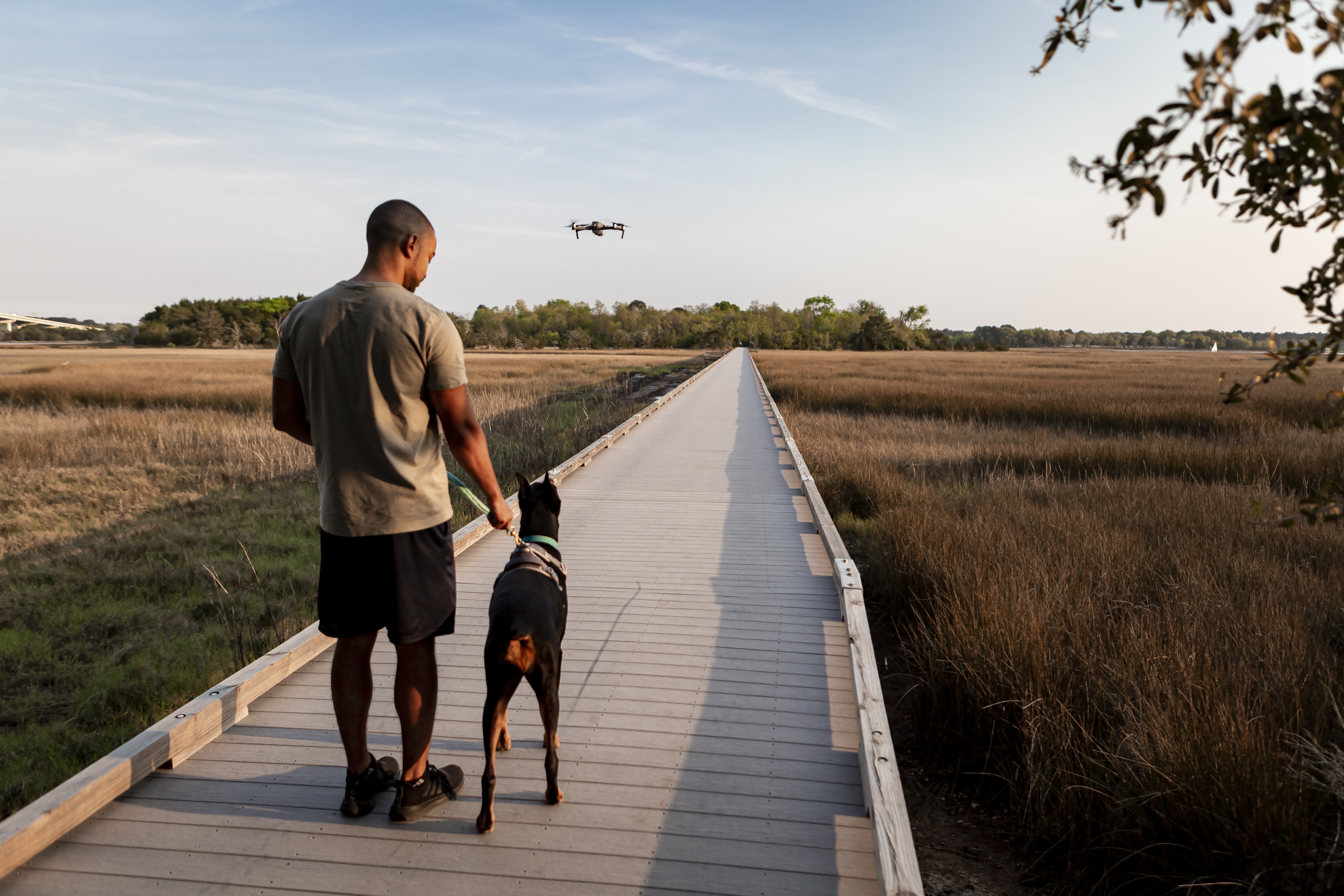Contact Us
To provide feedback on the Community Policing Dispatch, e-mail the editorial board at CPDispatch@usdoj.gov.
To obtain details on COPS Office programs, publications, and resources, contact the COPS Office Response Center at 800-421-6770 or AskCopsRC@usdoj.gov

U.S. Department of Justice
Office of Community Oriented Policing Services
Washington, DC 20530
Recruitment videos can be a valuable branding and recruitment tool for law enforcement organizations. In addition to attracting potential applicants, recruitment videos have the potential to increase community support and boost officer morale by highlighting the agency’s unique attributes. To create a video and generate recruitment materials that achieve these goals, it is important to have a foundation on which to base strategic planning and marketing efforts.
 South Carolina’s City of Charleston Police Department (CPD) has been successful at using evidenced-based policing research to formulate creative marketing and recruitment content. The recruitment unit collaborated with researchers at Clemson University and the University of South Carolina to examine the impact of different recruiting imagery on those universities’ criminal justice students. The CPD considered the study’s findings, which indicated what draws good candidates to the field, in designing and developing their first recruitment video for the department.
South Carolina’s City of Charleston Police Department (CPD) has been successful at using evidenced-based policing research to formulate creative marketing and recruitment content. The recruitment unit collaborated with researchers at Clemson University and the University of South Carolina to examine the impact of different recruiting imagery on those universities’ criminal justice students. The CPD considered the study’s findings, which indicated what draws good candidates to the field, in designing and developing their first recruitment video for the department.
This effort was led by Senior Police Officer Terry Cherry, a National Institute of Justice (NIJ) Law Enforcement Advancing Data and Science (LEADS) scholar, in collaboration with Clemson professor and NIJ LEADS academic Kyle McLean. It was executed by the CPD’s Recruitment and Selection Unit Supervisor, Sergeant Anthony Gibson.
SPO Cherry and Sgt. Gibson were aware that in the private sector, companies traditionally conduct a market analysis to understand their customer base and develop a successful marketing strategy. But after online investigation and communication with other agencies, they discovered that law enforcement agencies seldom use such research and analysis tools and that decisions on what content goes into recruitment videos are often made by executive leadership based on traditional beliefs and personal opinions.
Creating a Branding Message Based on Research and Analysis
The Clemson and USC researchers began by surveying 254 students in the colleges’ criminal justice programs to evaluate their reactions to tactical versus community imagery and messaging. The researchers examined how these images and messages affected students’ willingness to become police officers.
In addition to collecting the students’ demographic information, the survey asked three questions: (1) Can you see yourself becoming a police officer; (2) can you see yourself as an officer at the CPD; and (3) do the video’s message and visual content reflect a police department you would want to join?
The students were then asked questions about traditional recruiting videos to assess their interest in a law enforcement career. Two of the strongest positive motivators were (1) a chance to make a positive impact as police and (2) a chance to make a positive impact on the community.
Using what they learned from these efforts, the CPD recruitment unit developed their video’s storyline, showcasing the ability to make an impact and welcoming all individuals to apply to an organization where they can make a difference.
Branding a Department in an Age of Social Media
Asked how the survey’s findings were applied to their video, SPO Cherry said, “Everything we did was intentional.” To keep the scenes with officers organic and natural, they did not script the content. “Though they knew the general themes, we didn’t tell them what we were going to ask before filming started, so their answers were unrehearsed,” said Sgt. Gibson.
He added, “We filmed situations that demonstrated the message we wanted to convey without actually saying it, to communicate more visually with imagery than verbally with words.”
“Though the tactical imagery appealed to some of the surveyed students, the service imagery was more attractive so that is what we focused on,” said SPO Cherry.
They also tried to keep the video as realistic as possible. “Though we did have to close roads for the motorcycle scene, we conducted the scenes like real training scenarios to capture organic footage,” said Sgt. Gibson.
The entire evidence-based project, beginning to end, took approximately three years. The final product, a video titled No Better Time Than Now, was released in July 2021 and can be viewed on YouTube through links on the CPD’s website, Facebook page, Twitter, and Instagram.
A Morale Booster as Well as a Recruitment Tool
 The video gained overall support both within the department and from the public, drawing a lot of online views and praise on social media.
The video gained overall support both within the department and from the public, drawing a lot of online views and praise on social media.
“It was a morale booster,” said Sgt. Gibson. “Just from speaking to officers who saw it, we know that they were proud of it and they saw, on a larger scale, what the department can accomplish.”
As for its effect on recruitment, Sgt. Gibson said that since the video’s posting in July, the CPD has had applications from qualified and talented people who related to the video’s messaging, and the department is hiring diverse candidates with a heart of service.
National Efforts to Advance Evidence Based Recruitment
According to Sgt. Gibson, police departments from around the nation have reached out to learn more about the CPD’s evidence-based recruitment strategies and research efforts. “Though our video is Charleston-specific, we are sharing information and lessons learned that can be useful to others and have support from our executive leadership to do this,” he said.
Asked what she would say to other departments thinking about creating future recruitment videos, SPO Cherry said, “Your decision-making should be driven by research, and your big push should be social impact and service.”
To learn more about the CPD’s collaborative recruitment research and how it was applied to the project, please reach out to SPO Cherry at cherryt@charleston-sc.gov or 843-725-9619 or to Sgt. Gibson at gibsona@charleston-sc.gov or 843-870-4175. They are willing to provide a copy of their 2021 IACP Conference virtual presentation on evidence-based policing or assist with recruitment questions.
Photos courtesy of the Charleston Police Department.
Subscribe to Email Updates
To sign up for monthly updates or to access your subscriber preferences, please enter your email address in the Subscribe box.






